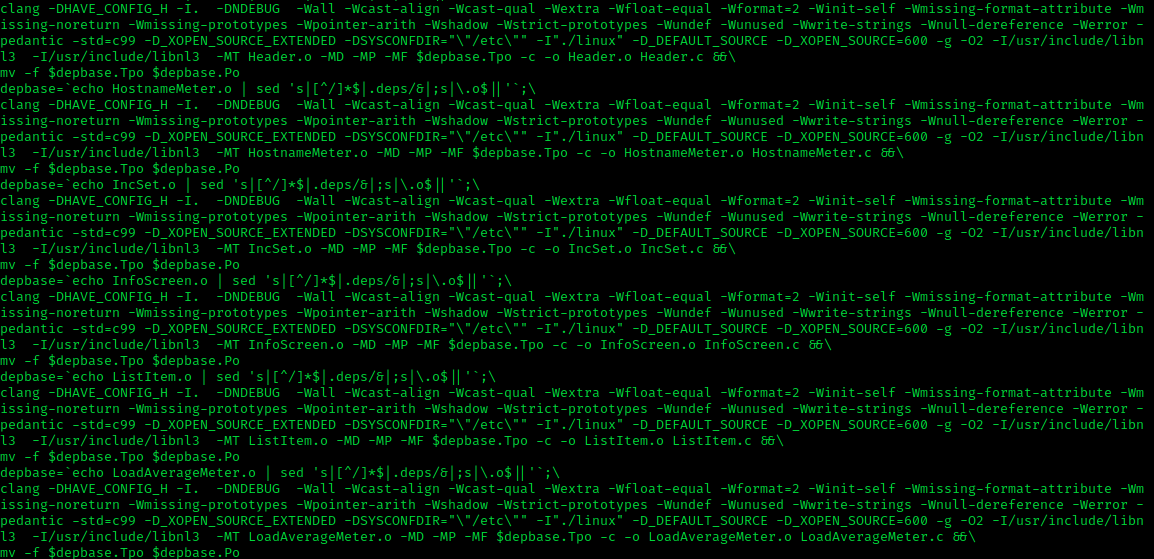|
Denormal
In computer science, subnormal numbers are the subset of denormalized numbers (sometimes called denormals) that fill the underflow gap around zero in floating-point arithmetic. Any non-zero number with magnitude smaller than the smallest normal number is ''subnormal''. :: ''Usage note: in some older documents (especially standards documents such as the initial releases of IEEE 754 and the C language), "denormal" is used to refer exclusively to subnormal numbers. This usage persists in various standards documents, especially when discussing hardware that is incapable of representing any other denormalized numbers, but the discussion here uses the term subnormal in line with the 2008 revision of IEEE 754.'' In a normal floating-point value, there are no leading zeros in the significand ( mantissa); rather, leading zeros are removed by adjusting the exponent (for example, the number 0.0123 would be written as ). Conversely, a denormalized floating point value has a significand with ... [...More Info...] [...Related Items...] OR: [Wikipedia] [Google] [Baidu] |
Kahan-Coonen-Stone Format
IEEE 754-1985 was an industry standard for representing floating-point numbers in computers, officially adopted in 1985 and superseded in 2008 by IEEE 754-2008, and then again in 2019 by minor revision IEEE 754-2019. During its 23 years, it was the most widely used format for floating-point computation. It was implemented in software, in the form of floating-point libraries, and in hardware, in the instructions of many CPUs and FPUs. The first integrated circuit to implement the draft of what was to become IEEE 754-1985 was the Intel 8087. IEEE 754-1985 represents numbers in binary, providing definitions for four levels of precision, of which the two most commonly used are: The standard also defines representations for positive and negative infinity, a "negative zero", five exceptions to handle invalid results like division by zero, special values called NaNs for representing those exceptions, denormal numbers to represent numbers smaller than shown above, and four roundi ... [...More Info...] [...Related Items...] OR: [Wikipedia] [Google] [Baidu] |
IEEE 754-1985
IEEE 754-1985 was an industry standard for representing floating-point numbers in computers, officially adopted in 1985 and superseded in 2008 by IEEE 754-2008, and then again in 2019 by minor revision IEEE 754-2019. During its 23 years, it was the most widely used format for floating-point computation. It was implemented in software, in the form of floating-point libraries, and in hardware, in the instructions of many CPUs and FPUs. The first integrated circuit to implement the draft of what was to become IEEE 754-1985 was the Intel 8087. IEEE 754-1985 represents numbers in binary, providing definitions for four levels of precision, of which the two most commonly used are: The standard also defines representations for positive and negative infinity, a "negative zero", five exceptions to handle invalid results like division by zero, special values called NaNs for representing those exceptions, denormal numbers to represent numbers smaller than shown above, and four roundi ... [...More Info...] [...Related Items...] OR: [Wikipedia] [Google] [Baidu] |
Floating-point Unit
In computing, floating-point arithmetic (FP) is arithmetic that represents real numbers approximately, using an integer with a fixed precision, called the significand, scaled by an integer exponent of a fixed base. For example, 12.345 can be represented as a base-ten floating-point number: 12.345 = \underbrace_\text \times \underbrace_\text\!\!\!\!\!\!^ In practice, most floating-point systems use base two, though base ten (decimal floating point) is also common. The term ''floating point'' refers to the fact that the number's radix point can "float" anywhere to the left, right, or between the significant digits of the number. This position is indicated by the exponent, so floating point can be considered a form of scientific notation. A floating-point system can be used to represent, with a fixed number of digits, numbers of very different orders of magnitude — such as the number of meters between galaxies or between protons in an atom. For this reason, floating-poi ... [...More Info...] [...Related Items...] OR: [Wikipedia] [Google] [Baidu] |
Floating-point Arithmetic
In computing, floating-point arithmetic (FP) is arithmetic that represents real numbers approximately, using an integer with a fixed precision, called the significand, scaled by an integer exponent of a fixed base. For example, 12.345 can be represented as a base-ten floating-point number: 12.345 = \underbrace_\text \times \underbrace_\text\!\!\!\!\!\!^ In practice, most floating-point systems use base two, though base ten (decimal floating point) is also common. The term ''floating point'' refers to the fact that the number's radix point can "float" anywhere to the left, right, or between the significant digits of the number. This position is indicated by the exponent, so floating point can be considered a form of scientific notation. A floating-point system can be used to represent, with a fixed number of digits, numbers of very different orders of magnitude — such as the number of meters between galaxies or between protons in an atom. For this reason, floating-poin ... [...More Info...] [...Related Items...] OR: [Wikipedia] [Google] [Baidu] |
Normal Number (computing)
In computing, a normal number is a non-zero number in a floating-point representation which is within the balanced range supported by a given floating-point format: it is a floating point number that can be represented without leading zeros in its significand. The magnitude of the smallest normal number in a format is given by ''b''''emin'', where ''b'' is the base (radix) of the format (usually 2 or 10) and ''emin'' depends on the size and layout of the format. Similarly, the magnitude of the largest normal number in a format is given by :''b''''emax'' × (''b'' − ''b''1−''p''), where ''p'' is the precision of the format in digits and ''emax'' is (−''emin'')+1. In the IEEE 754 binary and decimal formats, ''b'', ''p'', ''emin'', and ''emax'' have the following values: For example, in the smallest decimal format, the range of positive normal numbers is 10−95 through 9.999999 × 1096. Non-zero numbers smaller in magnitude than the smallest norm ... [...More Info...] [...Related Items...] OR: [Wikipedia] [Google] [Baidu] |
Intel
Intel Corporation is an American multinational corporation and technology company headquartered in Santa Clara, California. It is the world's largest semiconductor chip manufacturer by revenue, and is one of the developers of the x86 series of instruction sets, the instruction sets found in most personal computers (PCs). Incorporated in Delaware, Intel ranked No. 45 in the 2020 ''Fortune'' 500 list of the largest United States corporations by total revenue for nearly a decade, from 2007 to 2016 fiscal years. Intel supplies microprocessors for computer system manufacturers such as Acer, Lenovo, HP, and Dell. Intel also manufactures motherboard chipsets, network interface controllers and integrated circuits, flash memory, graphics chips, embedded processors and other devices related to communications and computing. Intel (''int''egrated and ''el''ectronics) was founded on July 18, 1968, by semiconductor pioneers Gordon Moore (of Moore's law) and Robert Noyce ( ... [...More Info...] [...Related Items...] OR: [Wikipedia] [Google] [Baidu] |
Instruction (computer Science)
In computer science, an instruction set architecture (ISA), also called computer architecture, is an abstract model of a computer. A device that executes instructions described by that ISA, such as a central processing unit (CPU), is called an ''implementation''. In general, an ISA defines the supported instructions, data types, registers, the hardware support for managing main memory, fundamental features (such as the memory consistency, addressing modes, virtual memory), and the input/output model of a family of implementations of the ISA. An ISA specifies the behavior of machine code running on implementations of that ISA in a fashion that does not depend on the characteristics of that implementation, providing binary compatibility between implementations. This enables multiple implementations of an ISA that differ in characteristics such as performance, physical size, and monetary cost (among other things), but that are capable of running the same machine code, so that a ... [...More Info...] [...Related Items...] OR: [Wikipedia] [Google] [Baidu] |
Timing Attack
In cryptography, a timing attack is a side-channel attack in which the attacker attempts to compromise a cryptosystem by analyzing the time taken to execute cryptographic algorithms. Every logical operation in a computer takes time to execute, and the time can differ based on the input; with precise measurements of the time for each operation, an attacker can work backwards to the input. Finding secrets through timing information may be significantly easier than using cryptanalysis of known plaintext, ciphertext pairs. Sometimes timing information is combined with cryptanalysis to increase the rate of information leakage. Information can leak from a system through measurement of the time it takes to respond to certain queries. How much this information can help an attacker depends on many variables: cryptographic system design, the CPU running the system, the algorithms used, assorted implementation details, timing attack countermeasures, the accuracy of the timing measurements, et ... [...More Info...] [...Related Items...] OR: [Wikipedia] [Google] [Baidu] |
Streaming SIMD Extensions
In computing, Streaming SIMD Extensions (SSE) is a single instruction, multiple data (SIMD) instruction set extension to the x86 architecture, designed by Intel and introduced in 1999 in their Pentium III series of Central processing units (CPUs) shortly after the appearance of Advanced Micro Devices (AMD's) 3DNow!. SSE contains 70 new instructions (65 unique mnemonics using 70 encodings), most of which work on single precision floating-point data. SIMD instructions can greatly increase performance when exactly the same operations are to be performed on multiple data objects. Typical applications are digital signal processing and graphics processing. Intel's first IA-32 SIMD effort was the MMX instruction set. MMX had two main problems: it re-used existing x87 floating-point registers making the CPUs unable to work on both floating-point and SIMD data at the same time, and it only worked on integers. SSE floating-point instructions operate on a new independent register set, the ... [...More Info...] [...Related Items...] OR: [Wikipedia] [Google] [Baidu] |
Streaming SIMD Extensions
In computing, Streaming SIMD Extensions (SSE) is a single instruction, multiple data (SIMD) instruction set extension to the x86 architecture, designed by Intel and introduced in 1999 in their Pentium III series of Central processing units (CPUs) shortly after the appearance of Advanced Micro Devices (AMD's) 3DNow!. SSE contains 70 new instructions (65 unique mnemonics using 70 encodings), most of which work on single precision floating-point data. SIMD instructions can greatly increase performance when exactly the same operations are to be performed on multiple data objects. Typical applications are digital signal processing and graphics processing. Intel's first IA-32 SIMD effort was the MMX instruction set. MMX had two main problems: it re-used existing x87 floating-point registers making the CPUs unable to work on both floating-point and SIMD data at the same time, and it only worked on integers. SSE floating-point instructions operate on a new independent register set, the ... [...More Info...] [...Related Items...] OR: [Wikipedia] [Google] [Baidu] |
Clang
Clang is a compiler front end for the C, C++, Objective-C, and Objective-C++ programming languages, as well as the OpenMP, OpenCL, RenderScript, CUDA, and HIP frameworks. It acts as a drop-in replacement for the GNU Compiler Collection (GCC), supporting most of its compilation flags and unofficial language extensions. It includes a static analyzer, and several code analysis tools. Clang operates in tandem with the LLVM compiler back end and has been a subproject of LLVM 2.6 and later. As with LLVM, it is free and open-source software under the Apache License 2.0 software license. Its contributors include Apple, Microsoft, Google, ARM, Sony, Intel, and AMD. Clang 14, the latest major version of Clang as of March 2022, has full support for all published C++ standards up to C++17, implements most features of C++20, and has initial support for the upcoming C++23 standard. Since v6.0.0, Clang compiles C++ using the GNU++14 dialect by default, which includes features from the C+ ... [...More Info...] [...Related Items...] OR: [Wikipedia] [Google] [Baidu] |



